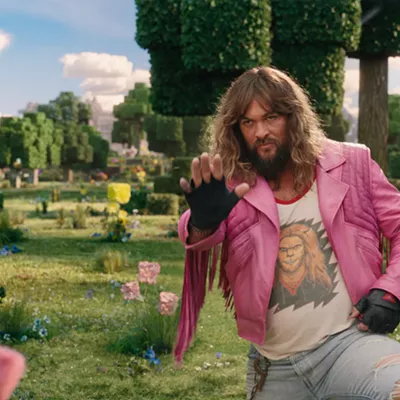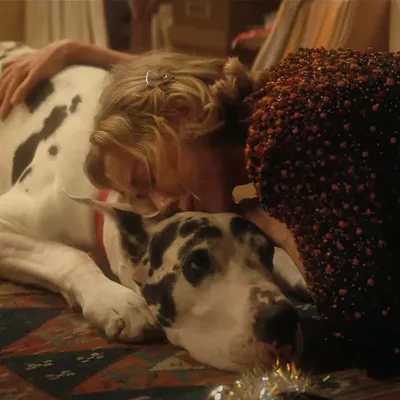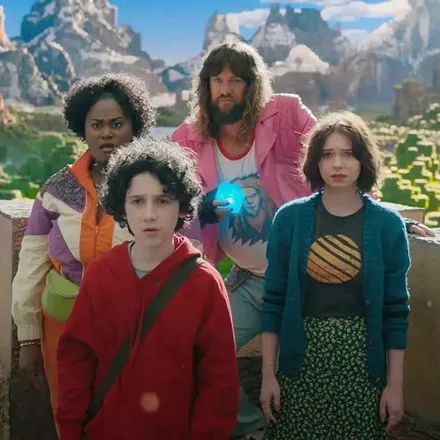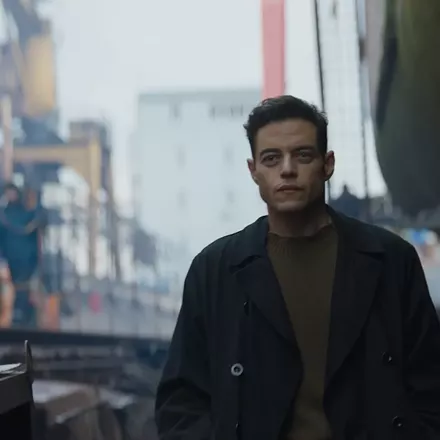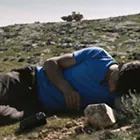In the past, documentary filmmakers Drury Gunn Carr and Doug Hawes-Davis of Missoula's High Plains Films have concentrated on small subjects like prairie dogs and coyotes. Naturalists and Wal-Mart parking lots were about as grandiose as the pair got. But with their latest film, Libby, Montana, the sense of scale has been redefined.
Clocking in at nearly two and a half hours, Libby is almost twice as long as anything the two have done previously. But it's not solely the film's length that gives it its gravitas - it's the film's depth and pace, the hundred hours of tape collected, the fantastic archival footage and the labor-of-love quality that primary director and editor Carr instills in the work.
The film's opening sequence is culled from a decades-old U.S. Bureau of Mines reel, a quirky promotional film obtained from the National Archives that explains how, during the Earth's formation, asbestos was created. The stock footage resembles those instructional films you got to watch after a test in fifth-grade science class, complete with ominous music and a booming, overly dramatic narrator. "About a billion years ago or so," announces the narrator, "when time was young, our Earth was a lonely, barren world. No birdsong broke the stillness. The wind cried. The storm spoke."
As the antiquated promotional film plays, viewers without any previous knowledge of the W.R. Grace Corporation's 40-year history in Libby, or the health complications resulting from inhalation of vermiculite fibers, won't have any idea what's to come. But those familiar with the Libby tale will understand why the footage is important, why it elicits such gallows humor. But even those in the dark are likely to be compelled to keep watching - guided by the foreboding, foreshadowing voiceovers from yet-to-be-introduced characters that follow the Bureau of Mines reel. "This is Libby, Montana, and things don't happen in Libby," one voice says. "If you couldn't read this in black and white," says another, "you couldn't believe it. It's a science fiction story." Paired with the voices are shots of townspeople unloading scores of plain, white, wooden crosses from a truck bed and hammering them into the earth.
What works so well about the long, slow-paced opening -- and, in fact, the long, slow-paced film -- is that Carr and Hawes-Davis can tell the whole story of Libby's environmental nightmare and Grace's corporate cover-up chronologically. Characters are able to begin their stories at the start -- not when they first got sick, but when they first arrived in Libby, when they married and had children, when they began work at Grace's vermiculite mine. This long view allows viewers to realize what's going on at the same time the characters do. It's a device that enables viewers to have a greater level of empathy for the characters, because there's the sensation that viewer and subject are going through the troubled times together.
The few breaks in the natural chronology come when the filmmakers insert snippets of Grace manager Earl Lovick testifying during a taped deposition in the wrongful death suit of a former Grace employee. Thanks to Lovick's testimony, the filmmakers never need to directly attack Grace for its negligence. Lovick's cold demeanor and his obvious lies about what the company knew about the dangers of its product defame the company's character better than company outsiders ever could.
The length also allows the filmmakers to abandon the clich & eacute;s demanded by sound-bite reporting. In a more rushed account of the Libby tale, a character like Alice Priest -- who has lost her husband to asbestos and is now dying of it as well -- would be relegated to the role of "old, dying widow who is meant to represent all the town's old, dying widows." But in this film she's given enough time, seen from enough angles, to come into her own. The same treatment is given to Gayla Benefield (who can chart the course of the last three decades through 40 dead or dying relatives), Paul Peronard (the bald, brawny EPA emergency on-scene coordinator who curses at and fights with his superiors over constant cleanup funding shortfalls), and a half-dozen other characters.
Despite its span, Libby, Montana is very much a High Plains film. It is marked by the Carr/Hawes-Davis style -- a hands-off, direct-cinema approach where narration is absent and the characters aren't identified until the credits. Yet Libby moves beyond the duo's past work. The absurd humor of American culture and the quirks of modern society scrutinized in Varmints and This Is Nowhere are mostly missing from Libby. The quick shock frames the filmmakers are so accustomed to using-like the heaps of poisoned prairie dogs in Varmints or the piles of coyote carcasses with blood-matted fur in Killing Coyote -- are also absent. Libby's humor is darker, its pain duller and longer lasting, with constant reminders of sickness, like half a dozen interviewees chatting away with oxygen tubes up their nostrils, or speaking with ill, labored breaths.
Many fans of High Plains' earlier work are going to complain that Libby is too long or too slow, that it tries to tell too many stories and lacks focus. But the film's style mirrors its content. The approach is different because it has to be. The scope of Libby is too big not to force the filmmakers to adapt.
Thankfully, they didn't retreat from the challenge. Libby, Montana is a better film for it, and Carr and Hawes-Davis are better filmmakers.





